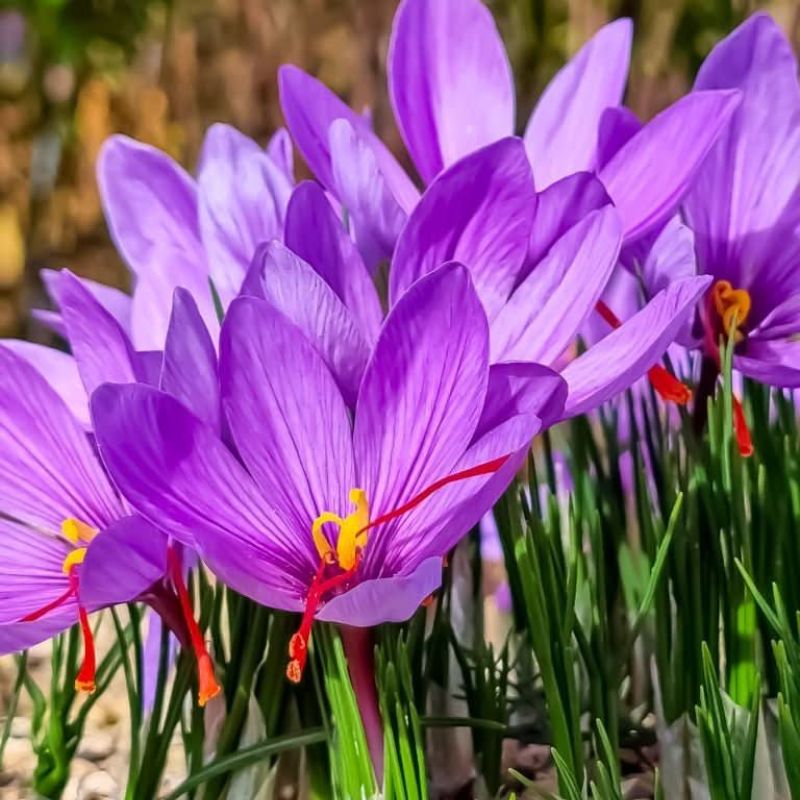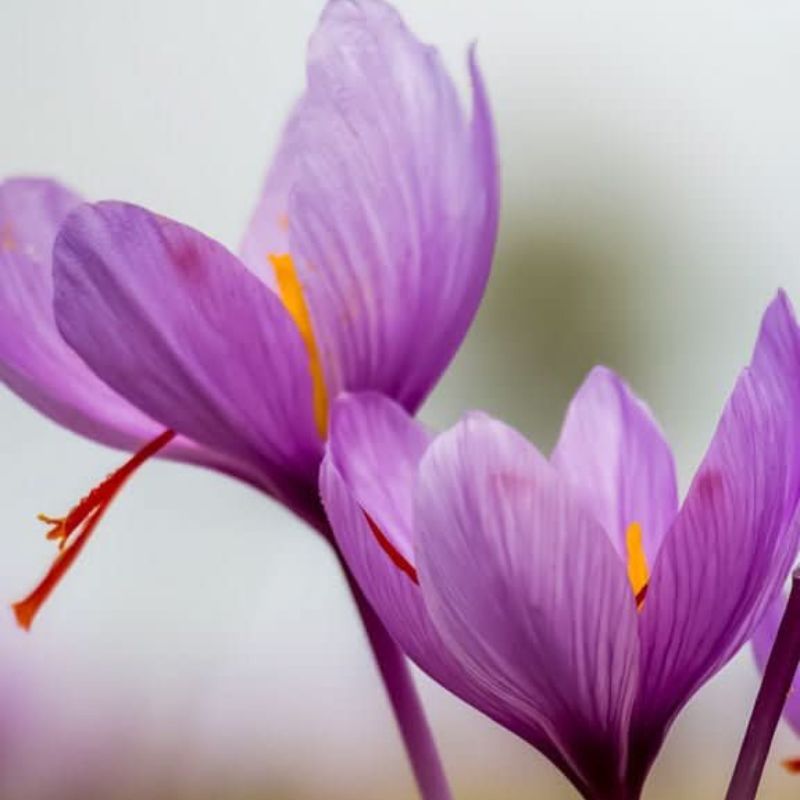Park Farm Plants
Saffron Crocus 'sativus' (Crocus)
Saffron Crocus 'sativus' (Crocus)
Couldn't load pickup availability
It takes about 150 flowers to produce just one gram of dried saffron spice, which is why it is more valuable by weight than gold! The saffron crocus has been cultivated for over 3,500 years.
Crocus sativus – The Saffron Crocus
Crocus sativus is no ordinary crocus – it’s the famous Saffron Crocus, prized for producing the world’s most expensive spice. Unlike spring-flowering varieties, this unique crocus blooms in autumn, revealing delicate lilac-purple petals with deep violet veins.
Inside each flower are three vivid crimson-red stigmas — the saffron threads — which can be hand-picked and dried for use in cooking, adding both flavour and colour to dishes. While each bloom yields only a few threads, planting a generous number will give you a truly special harvest.
The slender, grass-like foliage appears before or alongside the blooms and remains through winter, adding texture to your garden during the cooler months. Growing your own saffron offers a rewarding link to centuries of culinary tradition and the satisfaction of harvesting something truly exceptional.
Specifications
-
Botanical name: Crocus sativus
-
Flower colour: Lilac-purple with darker veins
-
Bulb size: 8/9 cm
-
Height: 10–15 cm
-
Spread: 5–8 cm
-
Position: Full sun, sheltered
-
Soil: Well-drained loam or sandy soil
-
Planting time: Late July to August
-
Flowering time: October–November
-
Life cycle: Perennial
-
Hardiness: Fully hardy
Planting & Care
Where to plant:
Choose the sunniest, warmest, and most sheltered location in your garden. Crocus sativus needs very well-drained, gritty soil and benefits from a hot, dry summer to encourage flowering. A raised bed or deep container is ideal.
How to plant:
Plant corms in late summer, about 15 cm deep with the pointed tip facing up, spacing them 10–15 cm apart. Water once after planting to settle them in.
Aftercare:
Flowers will appear in autumn. For saffron, harvest the red stigmas the morning the flower opens. Allow the foliage to die back naturally in late spring, and keep the soil dry during summer dormancy.
Share




